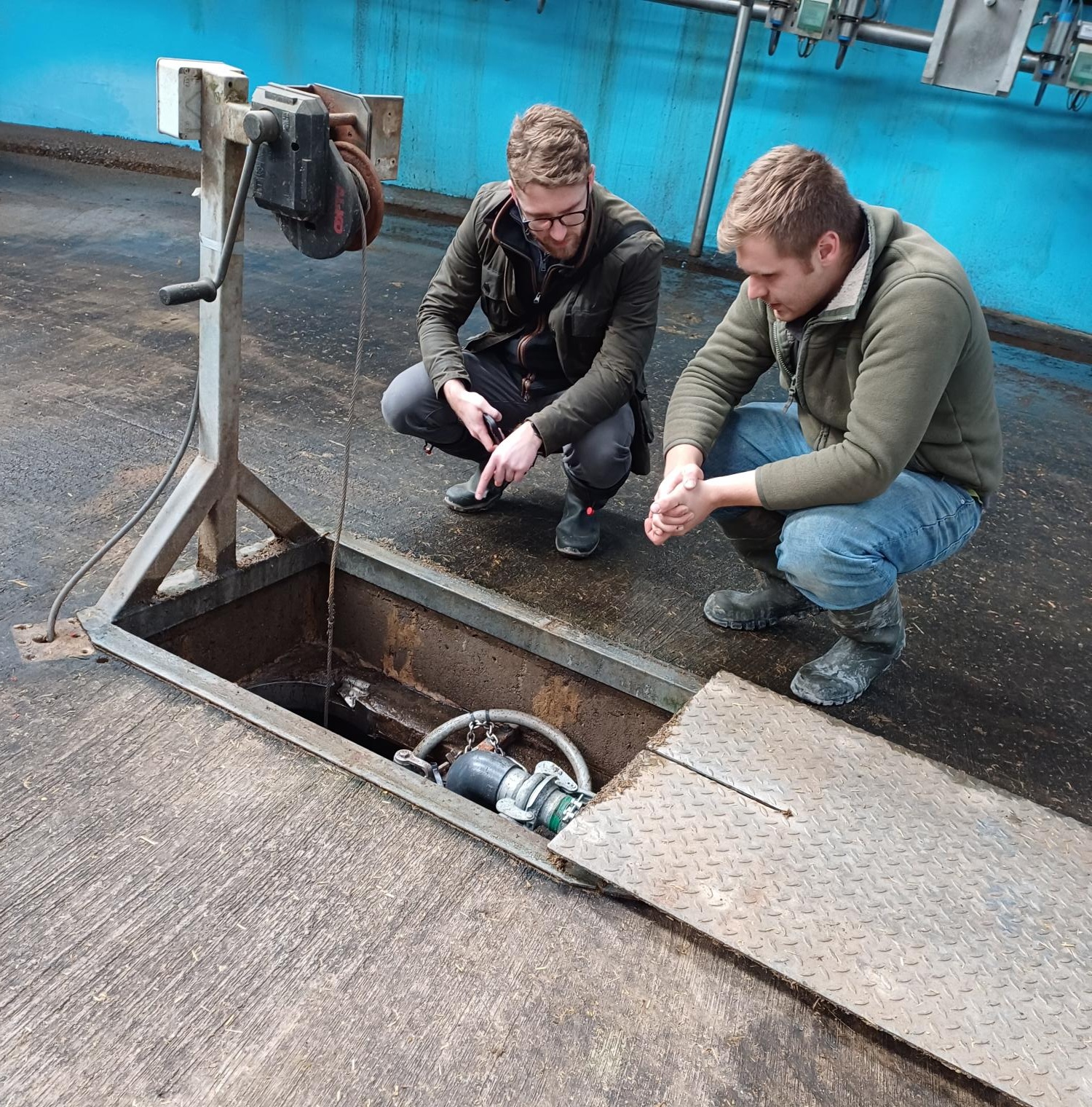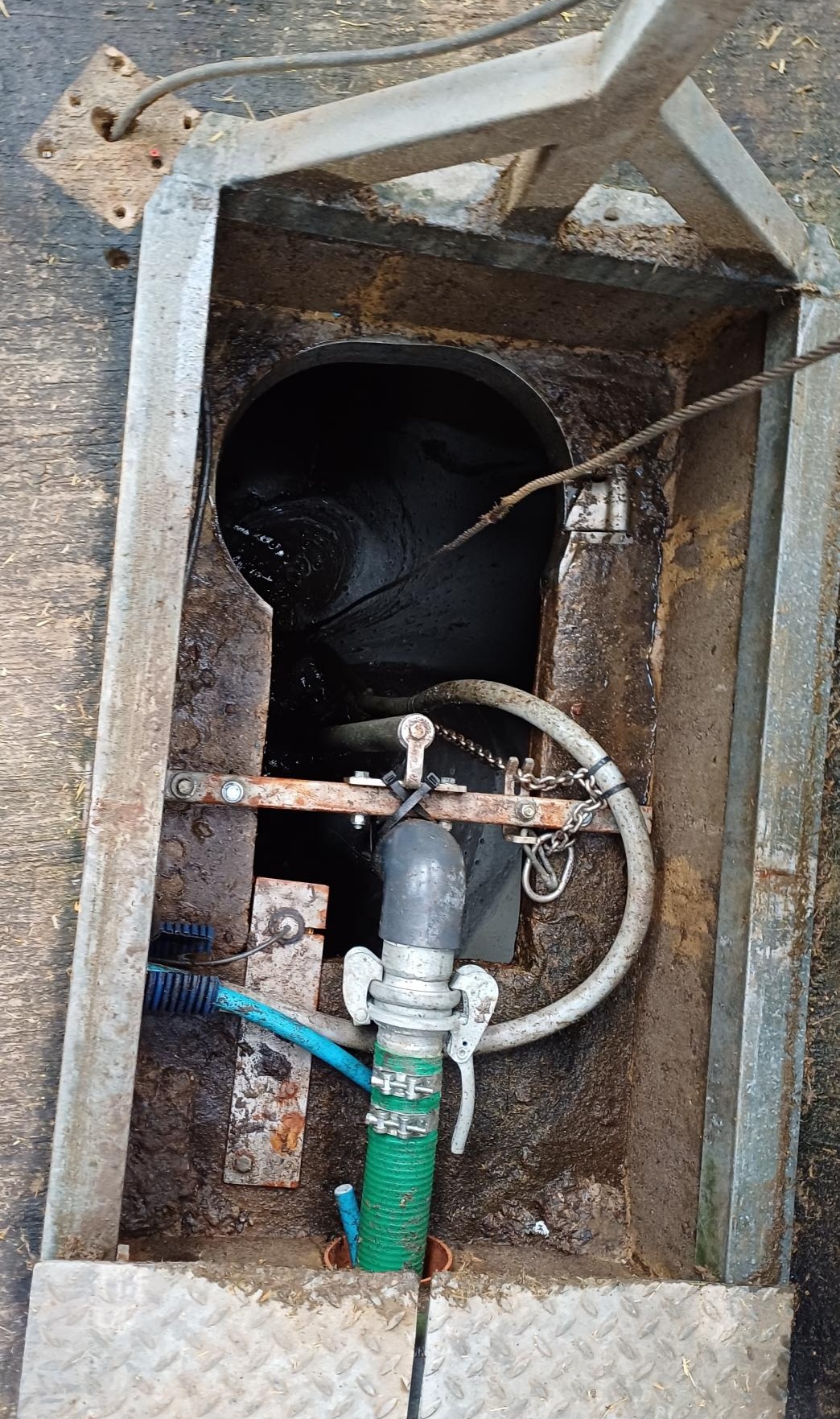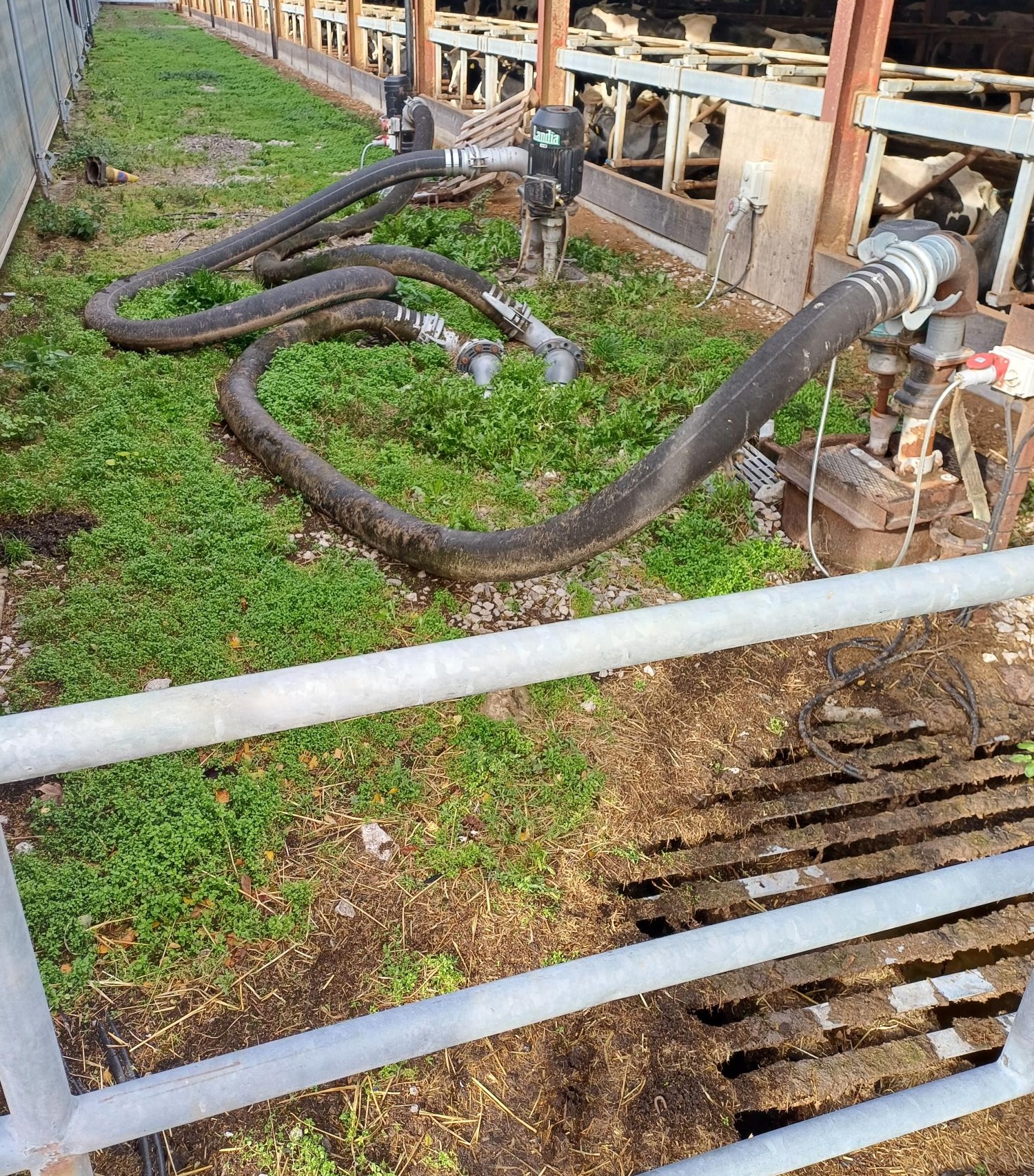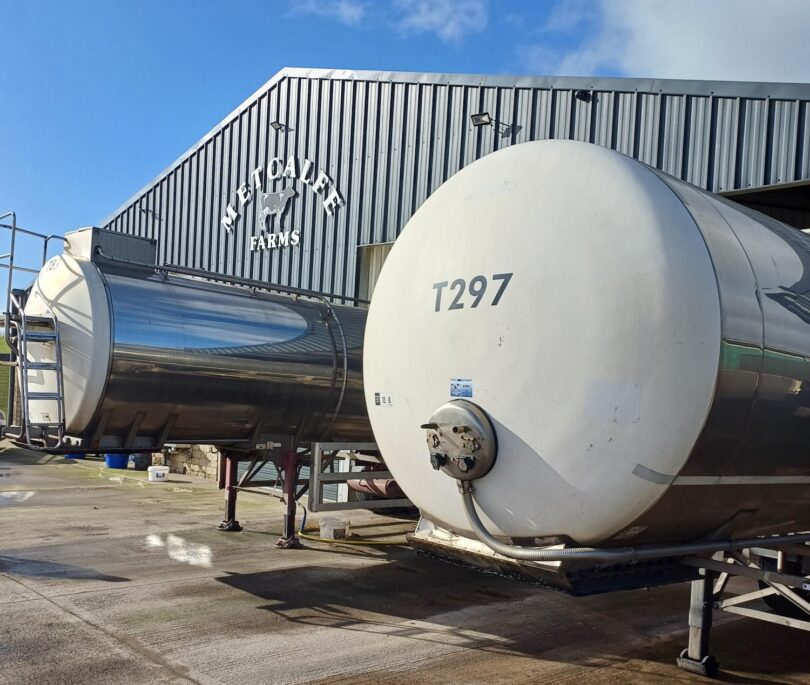At its dairy operation in the Yorkshire Dales, the introduction of new separators has given Metcalfe Farms the opportunity to futureproof the pumps it uses to transfer large volumes of slurry from its 2,000 (1,300 dairy) cows.
Separating slurry has undoubted benefits, but putting together a streamlined slurry transfer system covering three tanks, has presented plenty of challenges, especially with the need to feed the site’s 200kWh biogas plant.

Robert Metcalfe (right) and Landia’s Josh Edge.
Aside from the separators, one of first issues was to address the final pump in sequence that ultimately sends slurry (about 6% to 8% dry matter) about 120 meters (and 10 meters of lift) up to the 3,500m3 anaerobic digester.
Annoying bits and pieces inevitably find their way into slurry, which was enough to make the pump block quite regularly.
“I used to dread coming down here to sort it out,” said Robert Metcalfe, who oversees all things engineering on the dairy side of the business.
“The pump did an okay job when working but wasn’t the best with solids. It wasn’t a pleasant job spending over an hour unblocking it each time; a two-man job, so all very time-consuming, especially having to retrieve it with a pipe because there was no clutch at the bottom.”
That’s all changed now with the old unit replaced by a Chopper Pump made by Landia, who also supplied an integrated guide rail and a bespoke pipework system for easy access and lifting.
‘It is much a better design’
“Everything flows through so much smoother now,” added Robert. “It is much a better design. You don’t have to worry about any sort of pipe bending or extra weight of the added pipe. Generally speaking, the new pump doesn’t block, although just recently a large chunk of rope stopped it! But unlike before, it’s now a job for one person, and on this occasion, only took 20 minutes before simply lowering it back in again.”

‘Digestate from the AD plant provides significant benefits’
At the biogas plant, which is run by Iona Management Services, a second CHP (combined heat and power) engine has recently been added, which will help increase the amount of clean energy that is exported to the grid. Metcalfe supplies a slurry-only feedstock to the AD plant, and then buys power back at a discounted rate for its own use. In the winter this is around 300 kilowatt hours, rising to 360 kilowatt hours in the summer. In addition to providing power for the dairy and the sell-on to the grid, the digestate from the AD plant also provides significant benefits, as Robert Metcalfe explains:
“The digestate does wonders for our grassland. We spread a little bit on the crops, but it’s mainly focused on the grass. This year we did five cuts over 1,000 acres. We hardly spend anything on chemical fertilizer now.”
Working closely with Landia to look at how best to integrate the new separators, a 22kW pump was chosen to manage the slurry feeding task, with an existing long-shaft Landia pump moved up from its existing task on another tank.
“We’ve had this pump since 2004,” added Robert Metcalfe, “which has understandably endured plenty of wear, but when tested by Landia engineers during a service, the 20-year-old unit was still happily pumping full pipe, which I have to admit, I was pleasantly surprised by. Now that we have separators, we can remove solid material to reduce our environmental impact.”
To replace the old long shaft unit, a new 7.5kW Landia Chopper Pump has now been installed so that slurry levels don’t rise. Meanwhile, the existing Landia long shaft chopper pumps, which have already been in service for 20 years, since Metcalfe had its first shed, continue to work away.
‘Very strongly built’
Robert Metcalfe continued: “The pump at the front of the loop system that has been created gets plenty of pain, so no surprise it’s had some repairs over the years, but steadily pumping away, it, with the others, has ensured that the dairy’s channels never fill up. We’ve found that by keeping our channels narrow, the pumps keep them flushed out completely, whereas with wider channels, the whole thing would still need flushing out. Now that we have it all set up on timers, it’s seamless, so far less hassle.
“The Landia pumps are very strongly built things, and I like the fact that they are electric and quite modular, so we don’t have to hook up to a tractor. This very much fits in with what we constantly work towards with fewer engines turning and less burning of diesel. One Landia pump we’ve had now for three years, and it’s never given us a bit of trouble.”
Over in the Metcalfe milking parlour, Robert has been glad to see the back of having to replace small vortex pumps that blocked or blew completely, even though the liquids are very watery.
He explained: “As soon as any foreign debris or plastics came into play, straining the pump, we were having to buy a new one almost every six months due to burnout or component failure, so as they clearly weren’t up to the job, I called Landia for help. Also, the pump(s) had been installed on winches and over time, blockages and sediment buildup forced us to keep raising the pumps closer to the top of the tank, which in turn meant we ended up with sediment right up to the mouth of the tank.

Landia pumps are still going strong after 20 years of service at Metcalfe Farms.
‘Since we’ve had it installed, we haven’t had to touch it’
“We now have a new 5.5kW Landia pump that just flies through any debris or solids, which are an inevitable part of dairy wastewater/slurry. Nothing settles out with this new, much faster pump. It’s absolutely spot-on, and what’s great is that it is completely automatic. Since we’ve had it installed, we haven’t had to touch it. You can configure it so that in this case it knows we want to keep this tank pumped out and empty. The sensor knows the tank’s dimensions and capacity. It is so much better than what we’re doing before.”
Synching the pump operation, together with the investment in separators is just part of how Robert Metcalfe is helping focus on improvements to help take the diary part of the business forward, but without expanding too quickly. The dairy provides around 45 tonnes of milk per day to Paynes Dairies at Boroughbridge. Exceptionally high animal welfare standards for the Metcalfe cows continue to see a rise in yields.
“Going forward,” said Robert, “everything matters, even the little things. For all its benefits, we’d possibly consider sand bedding, but I don’t think our slurry channels would take it, and there’ such a big wear factor on pumps and machines. The sawdust we use is perfect, apart from the price!
“We’ve also been improving the lighting for our cows, again with some help from an automatic, dimmable system. Previously in hot summer spells, you could see that our cows were uncomfortable, which we don’t want. The milk output would drop. As well as the lighting, we’ve also put up new roof sheets to block out any intensive heat, which has made a big, positive difference.”
He concluded: “In time here we will probably phase out other brands of pumps as they come to the end of their life or cause problems, and just stick with Landia. I think it helps that they focus on pumps, rather than some who try to provide everything, plus we always get very good backup and no problems with the supply of spare parts.”
Related articles:
30-year Milestone For Chopper Pump Manufacturer Landia UK







